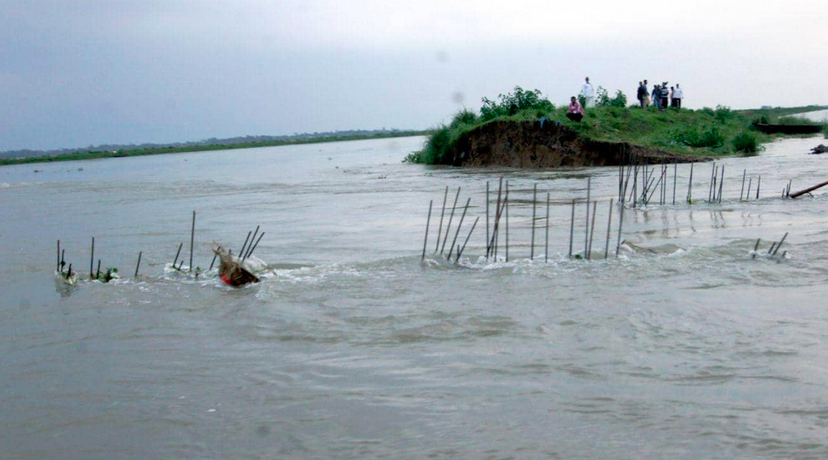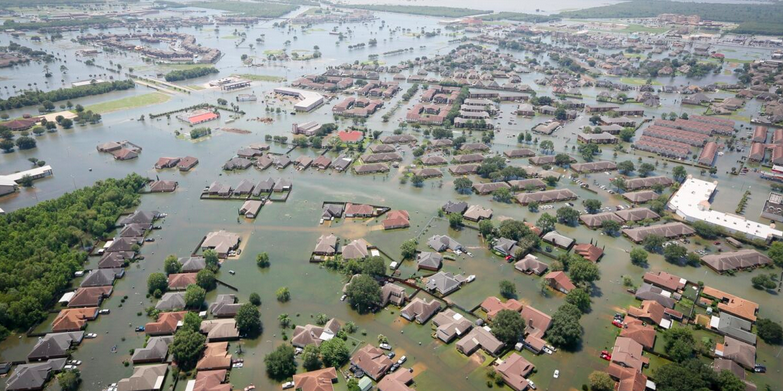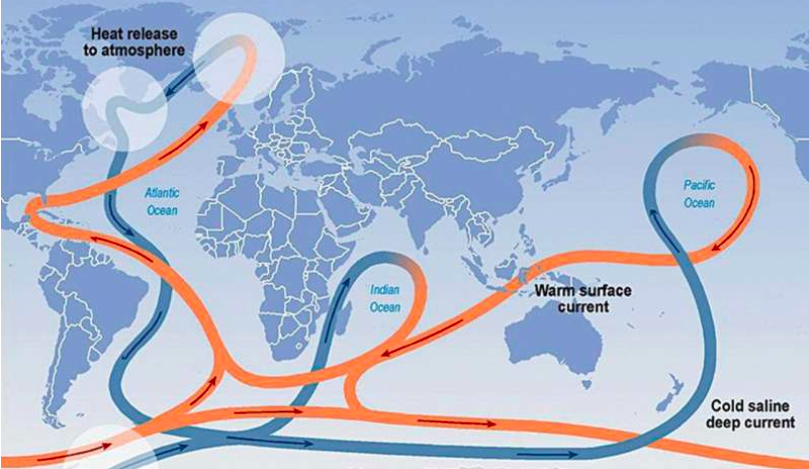On the 70 anniversary of the Fog
THE MOST UNUSUAL fact about the London Fog of 1952 was not that some 4,000 people died of it—one of the largest numbers of people killed by any environmental disaster—but that no one seemed to recognize that it was happening. Everyone knew, of course, that for four days the fog was so thick that traveling throughout the city was almost impossible. Few realized, however, just how deadly it was. After all, London had been notorious for its fog for a very long time. Romantic notions were attached to the fog, with events in many a thriller and period novel set amidst fog-bound London. For the residents of London, the fog was a frequent, if unwelcome, guest who was becoming a bit of a nuisance.
In 1952, when the fog hit, Londoners were relying heavily on soft, bituminous coal for fuel. The soft coal was cheap, in part because of the low cost of shipping it by sea from Newcastle, but it had a higher sulfur and nitrogen oxide content than the harder anthracite coal used in Wales and Scotland. The smoke it emitted was tarry and full of hydrocarbons.
When carbon particles of soot from coal-fire emissions combine with particles of water, fog becomes smog. The soot and water combination is not transparent to light, and as the fog thickens, light is prevented from penetrating through the foggy air. The sooty air is like the layer of black that gathers on the glass chimneys of oil lamps. Visibility is limited, and the breath one takes carries with it carbon particles and other dangerous substances.
Certain weather conditions, particularly temperature inversions, aggravate fog. Usually the air near the ground is warmer than air higher up, and the warm air rises and mixes with cooler air. Occasionally this relation is inverted with colder air remaining close to the ground and warmer air above, trapping the colder air on the ground. If there is little or no wind, the air becomes stagnant and anything in that air, such as soot, remains suspended.
During the nineteenth century, clean-air advocates attempted to address the emissions from factories and other businesses that contributed much of the soot. Eventually, they met with some success as legislation was passed making it a nuisance for a chimney to emit black smoke from a commercial establishment. Yet, enforcement was difficult and sporadic, especially with regard to proving what constituted black smoke.
The smoke from domestic hearths remained uncontrolled. One problem in regulating domestic sources was the lack of alternative, smokeless fuel supplies. Just as difficult an obstacle was the English fascination with a “pokeable” open fire. It was considered a national entitlement to make an open-hearth fire, and it was a sign of affluence, as well as of hospitality, to have a blazing hearth. By the first few decades of the twentieth century, those pokeable, domestic fires, along with industrial emissions, dumped some 76,000 tons of soot on London each year, the equivalent of about 650 tons for every square mile. About two-thirds of the smoke in London came from domestic fires. During World War II, the government even actively encouraged businesses to pollute as military authorities thought the smoke would serve as camouflage and make it more difficult for the German bombers to see their targets.
After the war, the fog remained an accepted aspect of living in London. In December 1952, however, a dense fog descended on London and stayed for four days. Earlier that December, a number of events had distracted Londoners from the typical cold, wet winter weather. The London papers were filled with reports on the plans for the coronation of Queen Elizabeth II that had been scheduled for June 1953. People were looking forward to Elizabeth’s first Christmas message. Christmas lights softened the cold, damp nights. Many looked forward to the Smithfield Show of prize cattle, sheep, and pigs, and agricultural machinery. The show, which took place in Earl’s Court, had been a major event since the eighteenth century, attracting a crowd from throughout England and abroad. The highlight of the show was the auction of the finest stock to butchers, a measure of pride for those who esteemed traditional English roast beef.
These distractions, however, could not entirely eliminate the weather. In the first few days of December, London experienced its typical climate: cold, damp air with some clearing spells, followed by fog or rain or snow. Often, the entire pattern—cold, clearing, rain, snow, and fog—occurred daily. During the first week of December, fog dominated.
By Thursday evening, December 4, a high-pressure system settled over London, and a temperature inversion trapped in the fog throughout the area. By Friday morning, tons of carbon particulate and sulfur dioxide poured out of millions of domestic coal fires and industrial plants into the still, foggy air over London. The temperature inversion prevented the dispersal of the fog into the upper air and trapped the smoke and other pollutants at ground level. Smoke that escaped from the tall stacks of the manufacturing plants fell to the ground rather than rising into the air.
On Friday, the fog and smoke covered much of London. A visitor staying in a warm, dry hotel with nothing to do might have found the fog on that first full day to be charming. Those who had to go to work did not. In the morning, people could see the outlines of buildings from a distance of only seventy to eighty yards; by noon, the large sculptural figure atop Nelson’s Column on Trafalgar Square was barely visible. Around Parliament, visibility was limited to a dozen yards. By noon, streetlamps had to be lit. With visibility along the Thames at zero, the Port of London was forced to close. Airports also closed. As the day wore one, travel became increasingly difficult. Buses everywhere in London experienced serious delays.
The color of the fog was not the usual gray but rather black, or at times yellow. As evening fell, the Christmas lights in store windows looked eerily suspended in open air since the stores themselves could not be seen from a short distance. Flares were placed at intersections for the vehicles still on the streets. People groped along buildings, stumbled over curbs and each other, and when they arrived home found they were covered with soot. Those who had meetings on Friday evening realized that the fog was seeping inside.
More disturbing than the impaired visibility was the difficulty in breathing, especially for older people and those with bronchitis. The smell of sulfur permeated the air. Noses stung, throats felt tight; people coughed up blackness.
When people awoke on Saturday morning the fog was everywhere, yellow and thick. It extended over an area of 1,000 square miles (2,590 m2) around London. Very few buses operated. At one point, seventeen buses formed a caravan to try to find their way back to the garage. The famous red double-decker buses inched along, bumper-to-bumper, with conductors leading the way by walking in front with flares, shouting directions. Ambulances traveled the same way. The fog infiltrated the tube stations. At one station, a bride and groom were waiting for a train to take them to their reception, since they had to abandon street-level transport. The bride’s wedding gown was black from the soot in the air. Sporting events were cancelled, and the unloading of livestock at the Smithfield Show was delayed. By Saturday evening, the fog followed people inside, through open doors, down chimneys, through cracks in walls, floors, and windows. Hospitals began to fill up. Yet by late Saturday, the BBC was reporting only that the fog might persist. No emergency had been declared.
On Sunday, with no break in the conditions, everything was blackened, inside as well as outside. Visibility remained at a few yards. Ambulances ran out of flares. With so many patients needing assistance the ambulances began to carry several on each trip to the hospital. On one trip, an ambulance that had been dispatched to carry four patients to a hospital ended up taking them all to the mortuary instead.
The elderly and sick, especially those living alone, were increasingly isolated during the fog. They could not get out, and if they did they could hardly breathe. As one elderly patient described it:
It makes you feel certain that you’re going to die, that death is surely coming for you, partly because of your difficulty in breathing and partly because of the fierce pain in your throat and lungs…and adding to your terror is the sight of the fog, when you see it there all around you, like some kind of gray, obscene animal, outside your window, drifting, floating, almost looking in at you, as though it were waiting there to claim you, to seize you, to choke you…to squeeze the breath, the very life out of your body.[1]
On Monday, the fourth full day of the fog, forecasts suggested that the fog might be lifting, but the forecasts were wrong. While air west of London cleared some, conditions over the city remained stagnant. An Aberdeen-Angus cow at the Smithfield Show died from the polluted air. The other cattle were saved by penicillin and whiskey-soaked rags that were held over their nostrils. Vehicles were abandoned all over the city.
In the Underground, the only viable means of transportation, long lines formed at the ticket booths. A performance of Verdi’s opera, La Traviata, was cancelled after the first act because fog inside the theater made the stage invisible. Early in the evening, the BBC broadcast that the fog was dirtier than usual and that coal-burning domestic fires were partly to blame. The item was deleted, however, from later broadcasts.
Finally, on early Tuesday morning, December 9, a slight breeze blew across London and the fog began to lift. By 9:00 a.m., the Thames cleared of fog, and the port reopened. More than one hundred ships waited to leave the port; over 200 ships waited to get in. The city began to breathe more easily.
The disruption of travel and sporting events, along with the impact of the fog on prize cattle in the Smithfield Show, dominated coverage in the papers. In the days following the lifting of the fog, letters to The Times debated only the economic benefits of electric versus coal heat. Few recognized the environmental or health hazards of the fog.
Soon, however, its human costs became visible. Doctors reported significant increases in respiratory disorders over previous winters. During the fog, hospitals around the city experienced a rise in emergency admissions, especially for respiratory ailments. The hospitals remained filled for days even after the clearing.
By mid-December the papers reported that as many as 1,000 Londoners had died as a result of the fog. Questions were raised in Parliament, and the Health Minister responded that there the deaths attributable to the fog may have been as many as 3,000. Smoke abatement advocates demanded an investigation. The government resisted. Harold MacMillan, then a Cabinet minister, remarked in private that they should form some committee that would do little, but would appear busy, in an effort to calm the public. It was not enough. In turn, the air pollution committee in Parliament, named after its chairman, Sir Hugh Beaver, addressed the matter with all due seriousness. The Beaver Committee published several interim reports that castigated both the local and national governments for failing to take preventive measures to protect the public. The committee also laid blame on domestic consumers as the largest producers of smoke and recommended the limit of smoke from all chimneys, both industrial and domestic, the production of greater supplies of smokeless fuel, and the establishment of smokeless zones in urban areas.
In January 1954, an article in the respected British Medical Journal estimated that the fog had caused over 4,500 deaths. That same year, the Ministry of Health produced a report that analyzed the effects of the fog. The government recognized that throughout those early days of December the metropolis of 8.5 million people was hardly aware that a disaster was occurring. The residents were also unaware that the aftereffects had continued to affect the city for several weeks. Dark smoke was detected as high as 4,500 micrograms per cubic meter and sulfur dioxide as high as 3,700—concentrations five to ten times normal levels. The report indicated that over 150 cattle at the Smithfield Show had received treatment, one had died and twelve were slaughtered. Autopsies of the cattle revealed emphysema and pneumonia.
The Ministry of Health concluded that as many as 4,000 people had died in excess of what would normally have occurred in the first three weeks of December, and that these deaths were caused by the fog, and in particular its tarry particles and sulfur oxides. The deaths were concentrated among people with pre-existing respiratory or cardiac disorders, and the vulnerable, those over sixty-five years and under one year old. The source of the contaminants was identified as irritants derived from the combustion of coal.
The report suggested that many of those who died from the fog likely experienced premature deaths. That is, the fog merely hastened the death of many who already had been suffering and were expected to die within a short time anyway. Some have referred to this concept as short-term mortality replacement or, more graphically, as harvesting. But others analyzed the number of deaths over the following weeks and determined that there was no drop in the number of deaths, and thus those who died during and immediately after the fog were not harvested but killed.
Only after further agitation by anti-smoke factions and other civic groups did the government address the issue through the Clean Air Act of 1956. For the first time, regulations subjected domestic coal fires to controls, established an objective measurement for what constituted dark smoke, and empowered local governments to establish smokeless zones in their areas.
The British Clean Air Act of 1956, implemented slowly over a decade, significantly reduced smoke caused by domestic fires. For example, when smog covered London in December 1975, the peak concentration of smoke and sulfur dioxide did not exceed 800 micrograms per cubic meter and 1,200 micrograms per cubic meter, respectively, or less than 20-30 percent of peak levels during the 1952 fog. Besides prompting the Clean Air Act, the 1952 fog served as a catalyst for the study of diseases and deaths attributed to air pollution. Studies over the past fifty years have led to an increased understanding of how soot, fog, and particulate matter affect populations, especially in demonstrating the correlation between high concentrations of particulate matter and respiratory diseases and deaths. Recent regulation of ambient air quality standards in the United States grew out of this work. Based on more advanced research techniques, a recent reassessment of the effects of the 1952 fog estimates that as many as 7,000 to 12,000 deaths, not 4,000, resulted from the fog.
Though Londoners moved away from soft, high-carbon coal, to smokeless fuels, they also grew more reliant on cars for transportation. While catalytic converters have reduced emissions per vehicle, the number of vehicles in London has only grown, contributing significantly to the air pollution in the city. By the 1970s, domestic coal fires had receded as a pollutant, only to be replaced by vehicular emissions as the primary threat to the health and environment of London. Londoners solved one fossil fuel problem only to create another, relying less on dirty coal fires but more on dirty and dangerous oil-fueled cars.
[1] Quoted in William Wise, Killer Smog: The World’s Worst Air Pollution Disaster (New York: Ballantine Books, 1970), at 164-65.
from Robert Emmet Hernan, This Borrowed Earth: Lessons From The 15 Worst Environmental Disasters Around The World (PalgraveMacmillan, 2010).





